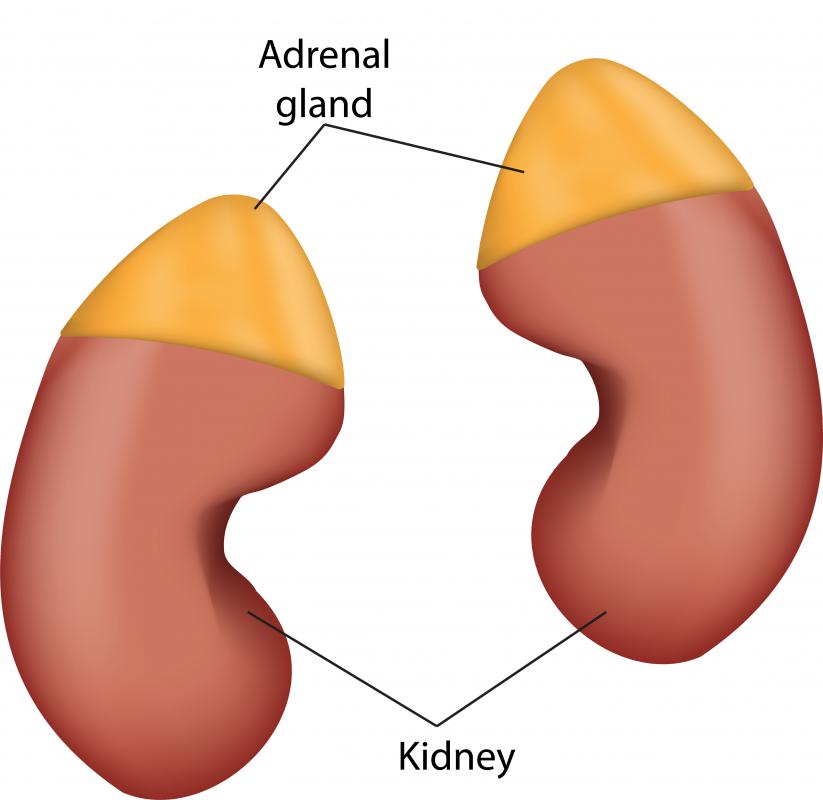At WiseGEEK, we're committed to delivering accurate, trustworthy information. Our expert-authored content is rigorously fact-checked and sourced from credible authorities. Discover how we uphold the highest standards in providing you with reliable knowledge.
How do I Choose the Best Pheochromocytoma Treatment?
The best pheochromocytoma treatment is sought with the help of an endocrinologist, and possibly other doctors like general surgeons and oncologists. A pheochromocytoma, which is a tumor that grows in one the adrenal glands, seriously affecting blood pressure and creating risk for conditions like heart attack and stroke, won’t respond to a conservative approach. Though a pheochromocytoma tumor is often benign, there can be instances where tumors are cancerous and metastasize to other parts of the body. There is little question of choosing the best pheochromocytoma treatment — it is really more a matter of getting good doctors to evaluate the condition and determine how to best proceed.
In most instances, the recommended pheochromocytoma treatment is surgical removal of the adrenal gland into which the tumor has grown. This is usually preceded by a brief period of taking alpha-blockers, which help regulate blood pressure. With uncontrolled blood pressure, risks from surgery increase. Physicians believe it is vital to first get the condition to respond to hypertension medications to reduce surgical risk.

Once blood pressure is controlled, surgeons perform open or laparoscopic surgery to remove the tumor, and patients may have a choice about the type of surgery. By interviewing surgeons, patients can make this decision based on a risks versus benefits discussion on what approach is preferable. The type of surgery may also depend on the patient's status. Sometimes, patients who need pheochromocytoma treatment have tumors in both adrenal glands, necessitating removal of both, or patients have complex medical scenarios where one method makes more sense.

If both adrenal glands are removed, the hormones they produce under normal circumstances need to be replaced by prescription medications. Any form of hormone replacement is usually unnecessary if only one adrenal gland is removed, because the remaining gland can compensate for its loss.
The course of pheochromocytoma treatment changes if the tumor is not benign. In these cases, there is a risk of the cancer spreading to other parts of the body. To address this, general surgeons look carefully for cancer evidence when removing the adrenal gland, and they might remove some surrounding tissue and evaluate it, or test other organs to determine if metastasis is occurring. Even if a small amount of spreading is detected, doctors would likely recommended a course of chemotherapy or radiation to eliminate remaining cancer cells. The success of these treatments are predicated on the type of tumor, the rate of spread, and the degree to which other parts of the body have already been infiltrated by cancerous cells.

The typical pheochromocytoma treatment is control of blood pressure, surgical removal of the gland, and ongoing hormonal supplementation or cancer treatment, if needed. In any of these cases, successful treatment is likely to require follow-up with an endocrinologist. If people are left with one functioning adrenal gland, making certain it doesn’t also develop a tumor is important. Regularly testing hormone levels after gland removal to ensure that they are at healthy levels is important. Oncologists or radiologists will also continue to follow those patients who have had malignant adrenal gland tumors.
AS FEATURED ON:
AS FEATURED ON:















Discuss this Article
Post your comments